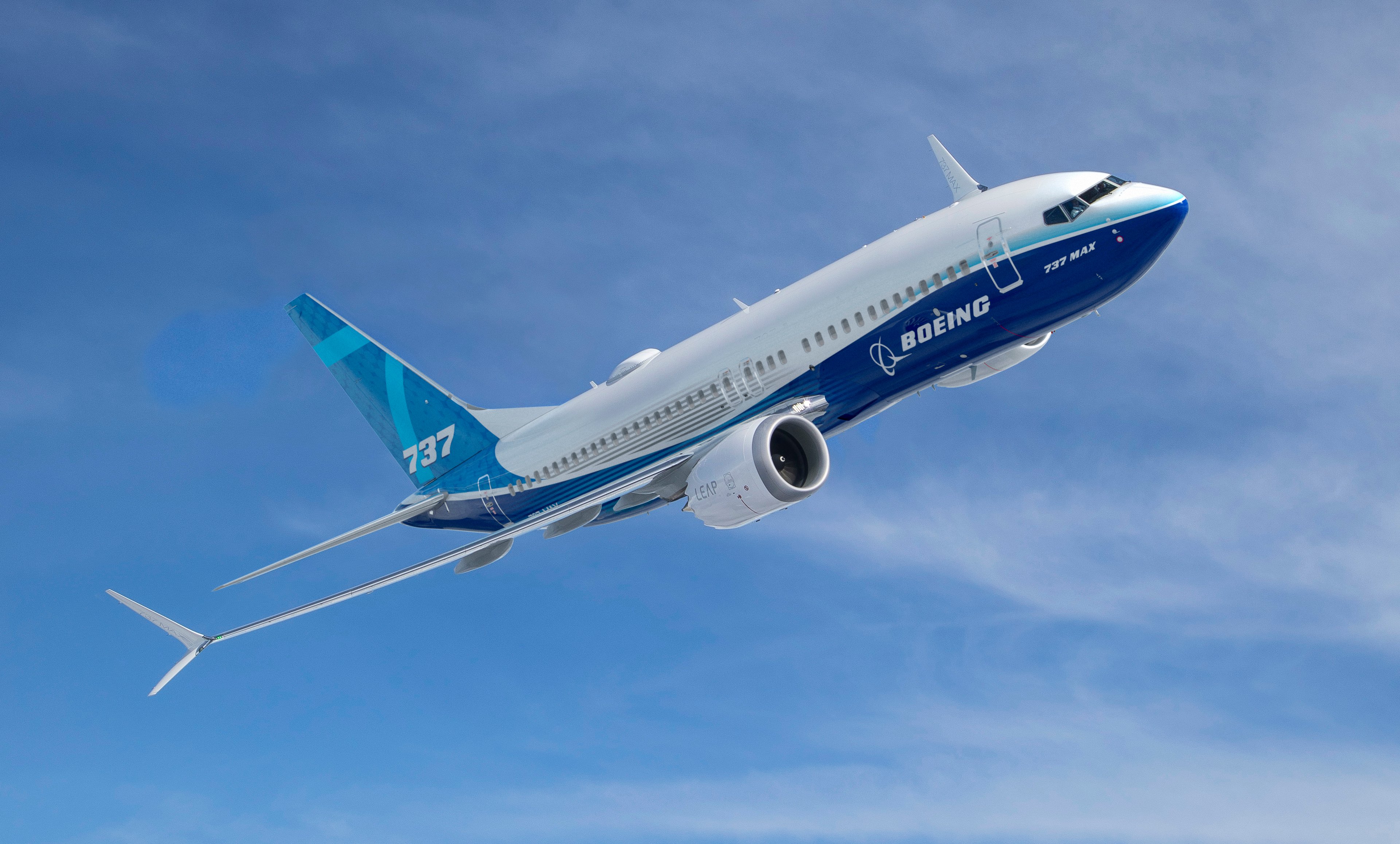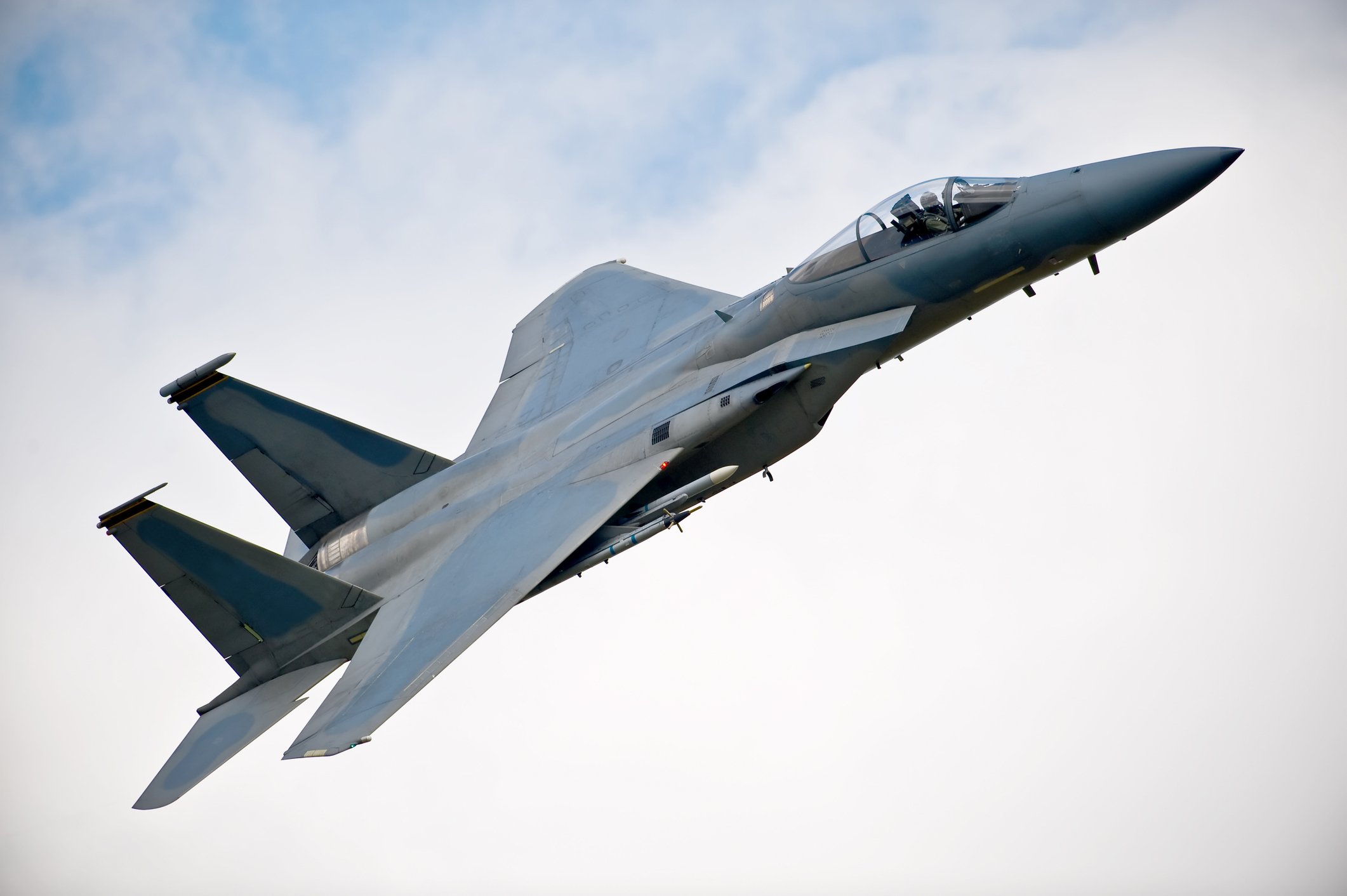
Once upon a time, Boeing built an airborne laser. Maybe it's time to build more of them? Image source: U.S. Air Force via WIKIMEDIA COMMONS.
Earlier this week we discussed the recent Wall Street Journal report on how Boeing (BA +1.98%) plans to wind down its fighter-jet production lines, exit the business of building fighter jets, and seek new revenue from maintaining and upgrading its installed base of fourth-generation F-15 and F/A-18 fighter jets instead.
It's a plan that new Boeing Defense head Leanne Caret describes as "evolving," or reinterpreting "what the fighter business means to us." But no matter how much Boeing evolves, the fact remains: Eventually, even the best-built plane gets too old, too obsolete, to be worth upgrading, or even maintaining. Eventually, those maintenance and upgrade revenues go away.
The cold, hard truth of the matter, then, is that once Boeing stops building fighter jets, the clock starts ticking on its total withdrawal from that industry. Eventually, there will be no planes to upgrade or maintain -- and Boeing must find new ways to grow its defense business.
Here are a few ideas that Boeing might want to consider.
Laser jets
The U.S. Air Force is on a total Star Wars kick lately, floating plans for all sorts of laser-armed warplanes -- everything from laser-blasting fighter jets to large laser gunships. For the time being, USAF seems content to buy F-35 fighter jets from Lockheed Martin (LMT +1.28%), but eventually, the Air Force is going to want someone to build it an X-wing.
And who knows more about flying laser guns than Boeing? More than a decade ago, Boeing led the effort to build a nuke-blasting Airborne Laser (ABL) for the U.S. Missile Defense Agency. Back then, laser guns were so huge that it took an entire modified Boeing 747 to cart around just one laser cannon. But today, lasers have shrunk so much that the Army can fit them in the back of a truck -- and Boeing is building them.
Everybody loves drones
Drones are cool. Everyone loves robots. Everyone loves airplanes. Put them together, and you've got a product that the Pentagon just cannot get enough of.
One thing that no one has quite managed to figure out yet, though, is how to build a drone capable of engaging in head-to-head aerial combat with manned fighter jets. For that, you need a drone that's jet-engined like an F-16, bigger than a Predator, armed to the teeth with air-to-air missiles -- and agile enough to compete with a manned fighter jet.
Put all those elements together, though, and you'll have a category killer that could put Lockheed Martin's F-35 out of business -- and put Boeing's fighter jet production lines back in business.
Boeing ahoy!
Speaking of drones, back down on Earth (or, more precisely, in the water), Boeing has taken an early lead in an uncharacteristic business: robotic submarines.
Just as the U.S. Air Force is enamored of aerial drones, the U.S. Navy has been working hard to integrate unmanned surface warships and submarines into its fleet. In fact, the Navy has set a 2020 target date for floating an entire squadron of robotic submarines.
Lockheed Martin has already tried to capture this business with its remote multi-mission vehicle (RMMV) -- and floundered horribly. Considering Lockheed Martin is almost singlehandedly responsible for kicking Boeing out of the fighter-jet business, it seems only fair that Boeing should now kick Lockheed while it's down and capitalize on the success of its own "Echo" line of robotic submarines.
The largest of these, the Echo Voyager, is a 51-foot-long submarine. It's not nearly as large or as capable as the Los Angeles-class nuclear attack boats built by the Navy's usual contractors. But it probably doesn't cost anywhere near as much, either. That means the Navy will be able to buy a whole lot of them, and that means that if Boeing succeeds in winning a contract to build the Navy's new robo-submarine fleet, it can enjoy real economies of scale in producing the boats -- the kind of economies of scale that permit a company to earn very respectable profit margins.
What it means to investors
How much good these headlines would do for Boeing stock is anybody's guess. What we do know, though, is that with its manned fighter-jet business in a tailspin, Boeing is buckling up for as much as a $5 billion annual reduction in revenue -- and in its highest profit-margin business. According to data from S&P Global Market Intelligence, Boeing's three defense businesses combined produce nearly as much profit as Boeing's entire commercial airplanes business, and on only half as much revenue.
It would be a real shame for Boeing, and for Boeing investors, to see those profits go away. Luckily, if Boeing spends the time and effort to diversify away from fighter jets, there's no need for that to happen at all.







